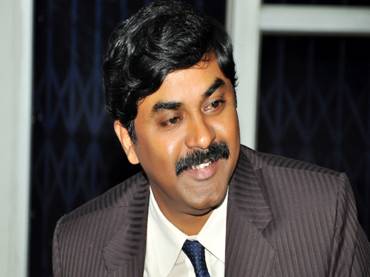
New Delhi. India’s Defence Research and Development Organisation (DRDO) successfully conducted an Anti-Satellite (A-SAT) missile test named Mission Shakti from the Dr APJ Abdul Kalam Island, formerly known as the Wheeler Island, at Dhamra in Odisha on March 27.
The Anti-Satellite test was performed with a new DRDO-developed Ballistic Missile Defence (BMD) interceptor against an Indian live orbiting target satellite in the Low Earth Orbit (LEO) in a ‘Hit to Kill’ mode. It may be noted here that the test has been planned and executed over a period of the last three years. The actual ground work for this mission began in 2016 when Prime Minister Narendra Modi in an address asked the DRDO scientists to demonstrate India’s advancing technological capabilities in planning and executing a space-based complex mission.
The geographically-distributed Command, Control, Communications, Computers and Information (C4I) weapon-system detected, tracked and classified the target as a satellite. The Mission Control Centre (MCC) authorised destruction of the target through an assignment to the Launch Control Centre (LCC). The LCC, in turn, computed a feasible intercept solution, prepared and launched the interceptor missile. The Kill Vehicle (KV) was released as per the real time computation of the sequence of the events followed by the jettisoning of the heat shield.
The KV with innovative design and the indigenous state-of-the-art ‘Hit to Kill’ technology homed onto the target. The advanced terminal guidance with the strap down Imaging Infra-Red (IIR) seeker and Ring Laser gyro based inertial navigation system guided the KV to hit the target satellite at closing speed of more than 10 km/sec. The Electro Optical Tracking System (EOTS) tracked the entire engagement and captured the ‘Direct Hit’, which was also corroborated by the last image frame of onboard IIR seeker. Tracking data from the range sensors confirmed that the mission met all its objectives.

“Technically, the Kill Vehicle had the capability to neutralise the target satellites in the entire LEO region. The interceptor has the capability beyond 1000 km. However, as a responsible nation for peaceful use of space, India chose a much lower orbit of around 300 km for capability demonstration with the purpose of avoiding threat of debris to the global space assets in International Space Station (ISS),” DRDO Chairman Dr G Satheesh Reddy said in a special interaction session in New Delhi on April 6. This also ensured that the debris decay fast, possibly in few weeks, he said.
The special session was organised to present details of the first-hand account of the mission and development milestones, including its technological aspects. Many eminent serving/retired strategic experts, technocrats, diplomats, top brass of the armed forces and the scientist fraternity across the various departments participated in the deliberations. On this occasion, DRDO presented the objectives, mission challenges and achievements of the A-SAT test.
Speaking on the various meetings DRDO held with eminent scientists, Dr Reddy thanked the scientist fraternity for its whole-hearted support in successful conduct of the mission. He also thanked the industry for collating about 2000 components of systems and subsystems. Answering a question on the concerns over debris, the DRDO chairman said, “The mission has been designed in a way the debris decay very fast. The chances of debris going up in the ISS are very less.” In another 10 days, there will be no effect, Dr Reddy noted. He also clarified that the DRDO’s simulation test ensures that the possibility of debris hitting NASA’s ISS is very less.
Commenting on the indigenous content in the test, Dr Reddy said that more than 90 per cent of the content is indigenous. All the systems have been developed indigenously. On more such tests, he said there will be no more tests as of now. Nearly 200 scientists and technicians were involved in the project, about 40 women.
Speaking on the occasion, Deputy National Security Advisor Pankaj Saran described the project as a technological and scientifically driven test. Prime Minister Modi congratulated the scientist community for the significant feat. The successful demonstration of Mission Shakti is a remarkable achievement, and has placed India on par with the elite club of three nations – the United States, Russia and China possessing the Anti-Satellite capability. The test demonstrated the nation’s capability to defend its assets in outer space. It has once again proved the capability of indigenous weapon systems, and is a vindication of the strength and robust nature of DRDO’s programmes.
…








